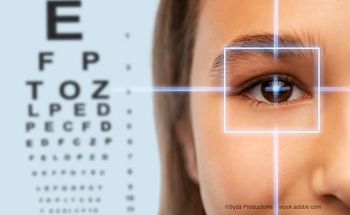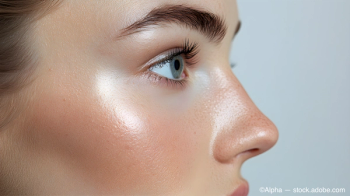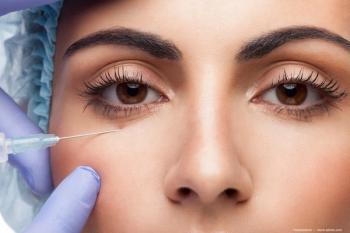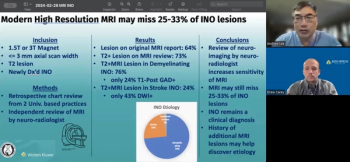
Is dry eye different for women and men?
A look at gender’s influence on presentation, contributing factors, and treatment choices
Editor’s Note: Welcome to “Eye Catching: Let's Chat,” a blog series featuring contributions from members of the ophthalmic community. These blogs are an opportunity for ophthalmic bloggers to engage with readers with about a topic that is top of mind, whether it is practice management, experiences with patients, the industry, medicine in general, or healthcare reform. The series continues with this blog by
Many of us see more female than male patients who suffer from
In addition, hormonal changes beginning around the age of 40 increase the risk for dry eye disease. In my experience, women also are more likely than men to seek help for their dry eye condition.
That disparity in numbers for dry eye is where most analysis of gender differences ends. Taking a closer look, we see meaningful differences in presentation, underlying causes, treatment choices, and even emotional outlooks.
Men’s and women’s dry eye disease
Men and women show similar signs and symptoms of dry eye disease: burning, pain, blurry vision, and foreign body sensation. In today’s high-tech world in which our education, occupation, and entertainment are primarily screen-based, almost everyone suffers from some degree of computer vision syndrome as well. Beyond those basics, differences between the sexes are clear:
• Women tend to worsen the common dry eye symptoms through extended wear of contact lenses and cosmetics. Although many men and women wear contact lenses, I find that more females than males continue to wear their lenses despite significant discomfort related to dry eye, being more highly motivated for aesthetic reasons.
• In my experience, women typically seek help at an earlier stage in the disease process. Men tend to wait longer before seeking care and thus have more advanced disease at the time of diagnosis. I even care for some men who are on disability for their dry eye condition.
• Some of my male dry eye patients with severe symptoms tend to have other medical conditions that cause or contribute to dry eye, including graft-versus-host disease or glaucoma (the medications for which may cause dry eye and ocular surface inflammation).
• Systemic problems that contribute to dry eye for my female patients include hormonal changes and autoimmune/inflammatory conditions such as thyroid disease, lupus, rheumatoid arthritis, and Sjogren’s Syndrome-all conditions that are more common in women.
• Women tend to undergo more elective procedures involving the eye and the lids. Although LASIK is pursued by both my male and female patients in similar numbers, women seem more likely to have had other procedures that can cause dry eye to worsen, such as blepharoplasty, face lift, lash extensions (performed with toxic formaldehyde glue), and eyeliner tattoos.
The diagnostic process is independent of gender. A thorough medical history includes inventory of both systemic and topical medications. We always have our patients complete an OSDI questionnaire to gauge their symptoms and measure osmolarity (TearLab Osmolarity Test, TearLab) and MMP9 (InflammaDry, Quidel) on an initial visit. We examine the lids for involvement of the meibomian glands.
Thereafter, we customize the diagnostic process, which may include blood work (for autoimmune or inflammatory conditions), meibomography, topography, allergy testing, or Sjogren’s testing, according to the patient’s history and initial testing.
Treatment disparities
For both women and men, we follow the standard DEWS II protocol. I generally start with medical therapy, including over-the-counter lubricant drops and prescription topical medications such as cyclosporine (Restasis, Allergan) or lifitegrast (Xiidra, Shire), sometimes teamed with short-term low-dose steroids. We then progress to autologous serum tears, manual expression, thermal pulsation treatment (LipiFlow, Johnson & Johnson Vision) or intense pulsed light (IPL) treatment (Lumenis Inc.).
We stress a solid lid hygiene home program for all patients who have some component of meibomian gland dysfunction (most dry eye patients).
Despite all of the similarities in treatment for both men and women, we see certain disparities:
• Women tend to be more compliant with their daily maintenance program, including drops and lid hygiene. Men often rely on their spouses for reminders.
• Men are more likely to choose a procedure sooner than women. They seem to be looking for a “quick fix” or a “jump start” for their treatment program, whereas women tend to be more invested in the maintenance regimen and long-term solution.
• When it comes to procedures, both women and men appreciate thermal pulsation therapy, which can help control dry eye for several years. IPL is an effective therapy for rosacea blepharitis, which affects both women than men. Both my male and female patients like this procedure because their eyes feel better and their skin appearance is improved by reducing malar and lid margin telangiectasias.
• Women tend to rely more on emotional support from their physician and the staff. For example, my female patients prefer to see the same technician at every visit, while men do not tend to have such a strong preference. Dry eye is a chronic illness, and for women, particularly those who have to change or eliminate makeup, stop wearing contact lenses or take other steps that affect their appearance, the relationships they build in our practice seem to provide welcome comfort while creating a partnership that ensures better compliance throughout the treatment process.
Through the creation of a supportive partnership, we can help our patients better understand their condition and their treatment regimen. For the treatment regimen to be most effective, this requires a long-term commitment and consistent effort on the part of the physician, technicians in the clinic (who may assist with treatment and with hygiene training) and from the patient. Understanding some of these gender disparities may be helpful in allowing us to provide the most empathetic care for our patients who suffer from this chronic condition.
Disclosures:
Kendall E. Donaldson, MDP: (305) 326-6031
Dr. Donaldson is the medical director of the Bascom Palmer Eye Institute at Plantation, FL, and a professor of clinical ophthalmology at Bascom Palmer Eye Institute. Dr. Donaldson is a consultant with financial interest at the following companies: Alcon, Allergan, Johnson and Johnson, Bausch & Lomb, SUN, Shire, Omeros, TearLab, Zeiss, and Lumenis.
Newsletter
Don’t miss out—get Ophthalmology Times updates on the latest clinical advancements and expert interviews, straight to your inbox.













































